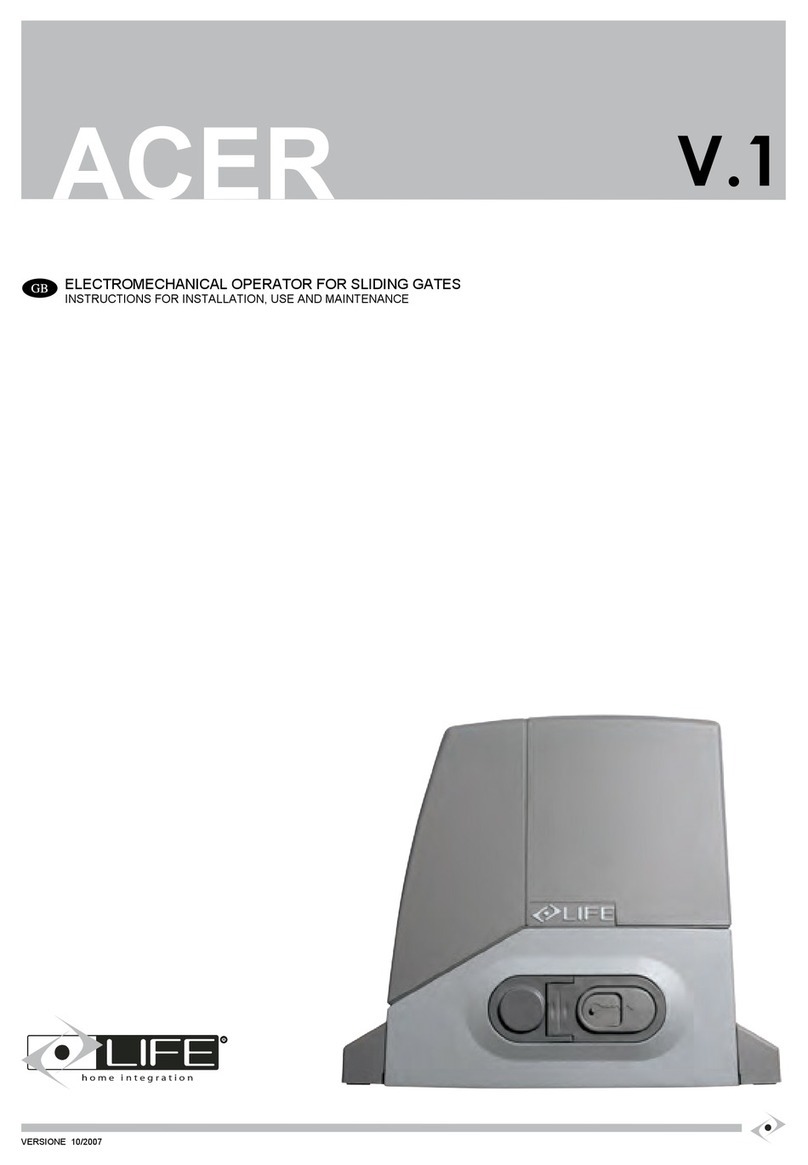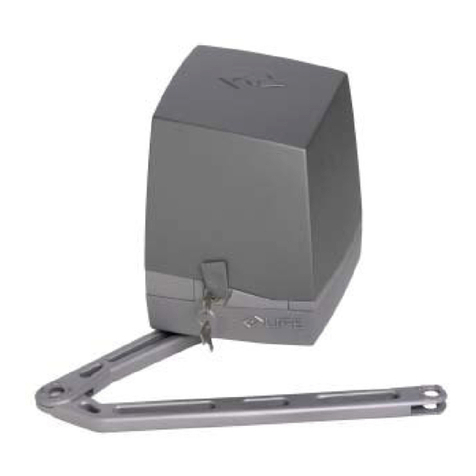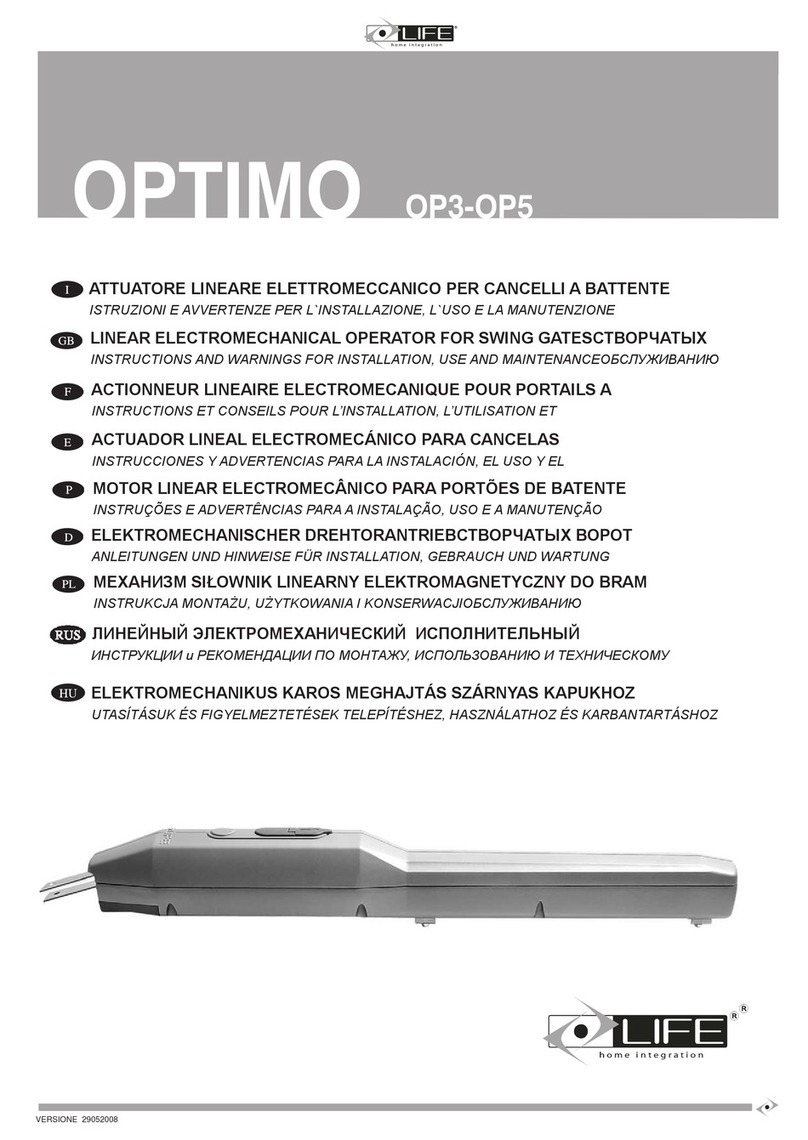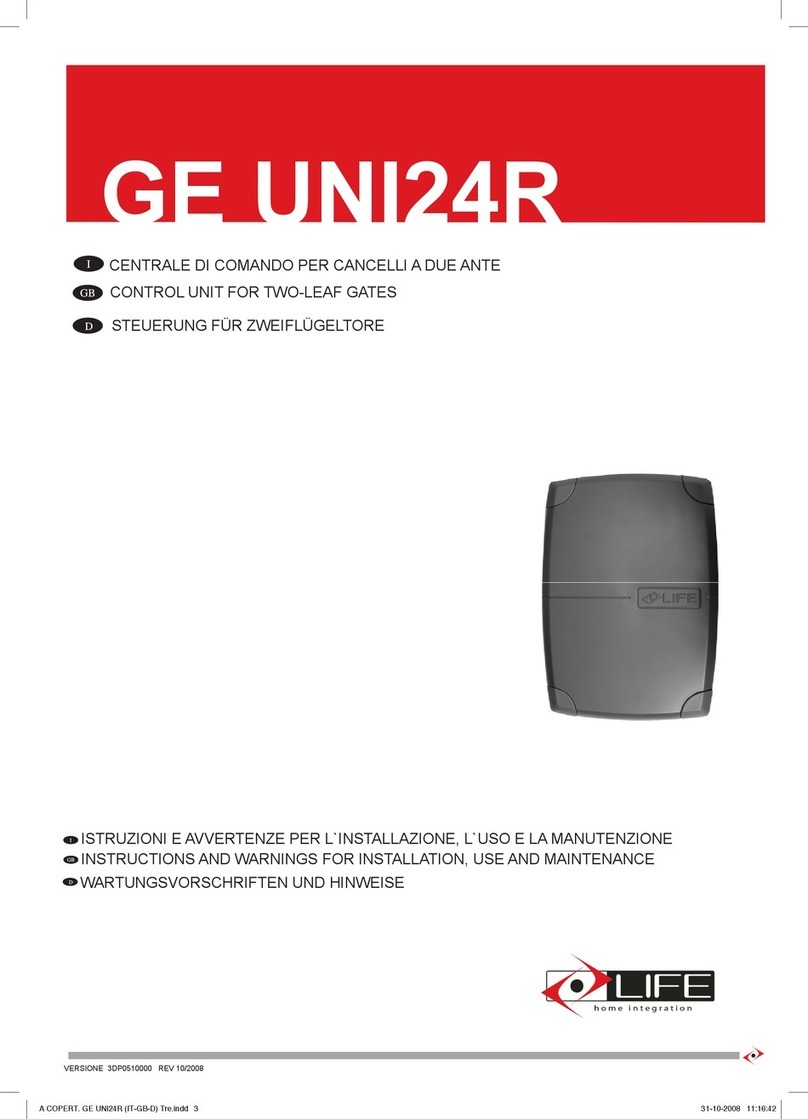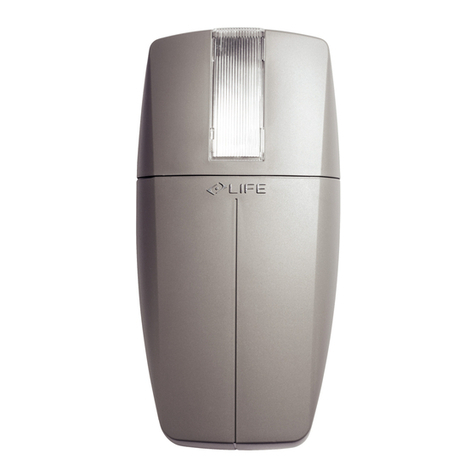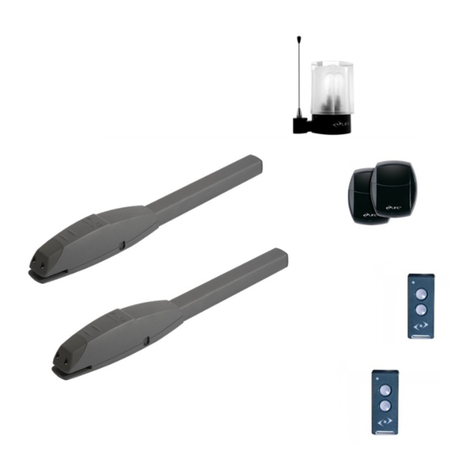
CONTROL UNIT FOR TWO-LEAF GATES GE UNI R
Instructions and warnings for installation, use and maintenance
MANUAL DESTINED FOR USE BY PROFESSIONAL FITTERS ONLY
nstallation may only be performed by professional fi tters
INSTALLATION OF AUTOMATIONS WITH STOP
NSTALLATION OF AUTOMATIONS WITH
1.3 GEBOX container installation.
1.3.1 Control unit extraction.
1.4 List of electric cables.
etting up the electric system and connection
ntroducing the electric wires into the GEBOX.
1.7 Control unit connections.
iring diagram of the right hand side of the
iring diagram of the lower part of the control unit.
2.1 Description of the keyboard.
2.2 Radio control identifi cation.
2.2.1 STEP command identifi cation.
2.2.2 PEDESTRIAN command identifi cation.
2.2.3 Radio control resetting.
2.2.4 Resetting all identifi ed radio controls.
2.2.5 Identifi cation without using the keyboard.
perators without electric stop switches: direction,
travel and speed identifi cation.
perators with electric stop switches: direction,
travel and speed identifi cation.
3.1.1 Card initialisation.
3.1.2 Resetting travel and functions.
3.1.2 Resetting the travel.
3.3.11 Deceleration in opening and closure.
3.3.12 Obstacle detection.
3.3.13 Pedestrian opening.
3.5 Preset functions F1 & F2.
4.1 Malfunctions indicated on the control unit.
5.1 Flashing light functions.
5.2 Automation malfunction.
nformation on the manufacturer.
AFETY INSTRUCTIONS AND WARNINGS
7.1 General instructions and warnings
7.2 Storage instructions and warnings.
8.1 Instructions and warnings for
AFETY INSTRUCTIONS AND WARNINGS
10.1 Indications and warnings for use
11.1 Maintenance instructions and warnings.
11.2 Routine maintenance.
12 DEMOLITION AND DISPOSAL.
ANUFACTURER’S DECLARATION OF






